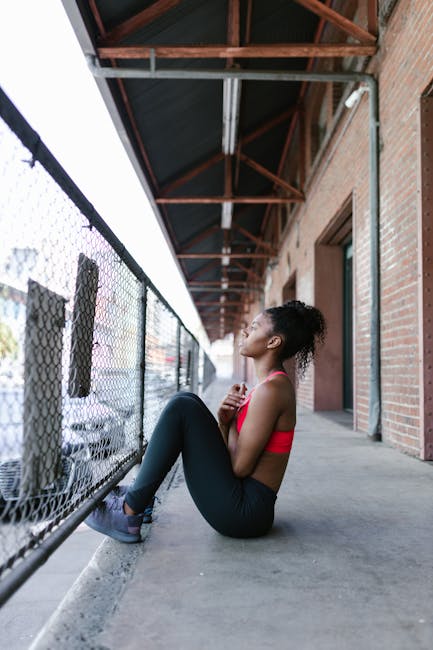In the present day and age, people are always looking for the most efficient and effective way to get in shape. Whether it is for weight loss, to build muscle, or to simply stay active and healthy, bodyweight training has been more popular than ever as an excellent way to achieve fitness goals. While many people associate bodyweight training with simple, low-impact exercises such as squats, lunges, and push-ups, the reality is that bodyweight training is a full-body workout that can give you an incredible workout from head to toe.
Don’t have a gym pass? No problem. Bodyweight training requires little to no equipment and can be done virtually anywhere. In this guide, we’re going to cover the basics of bodyweight training, as well as some advanced tips and exercises to take your workout to the next level.
What Is Bodyweight Training?
Bodyweight training, also known as calisthenics, is a type of exercise that uses a person’s own body weight as resistance. Bodyweight exercises can be performed alone or with minimal equipment such as resistance bands, jump ropes, or exercise balls. Some common bodyweight exercises include push-ups, planks, squats, lunges, and burpees. The benefits of bodyweight training are numerous and range from improving strength and endurance to building muscle and burning calories.
The Benefits of Bodyweight Training
Bodyweight training has so many great benefits, it’s hard to know where to start. One of the biggest advantages of bodyweight training is the fact that it requires little to no equipment, making it the perfect workout for those who do not have a gym pass. Additionally, bodyweight training is incredibly versatile, as it can be easily modified to accommodate all fitness levels. Whether you’re a beginner or an advanced athlete, you can make bodyweight exercises harder or easier based on your fitness goals. Furthermore, bodyweight exercises can be performed anywhere, as they do not require much space and minimal equipment. Finally, because bodyweight exercises are full-body workouts, they can help improve coordination, balance, and mobility in addition to helping to improve overall fitness levels.
Tips for Getting Started with Bodyweight Training
Ready to get started with bodyweight training? Here are some tips for getting the most out of your workout:
Start with the basics.
Even if you consider yourself to be in good shape, it is very important to start with the basics when first starting out with bodyweight training. Start with the basic exercises such as squats, push-ups, planks, and lunges to familiarize yourself with the movements.
Focus on form.
When starting out with bodyweight training, it is essential to focus on form. Proper form not only helps to prevent injury, but it also ensures that you’re getting the most out of your workout. When performing bodyweight exercises, focus on keeping your back straight, shoulders back, and your core engaged.
Progress slowly.
As with any kind of exercise, it is important to progress slowly when starting bodyweight training. Start with a lower number of reps and sets, and gradually increase the number of reps and sets as your strength and fitness level increase.
Always listen to your body.
One of the most important tips to keep in mind when starting bodyweight training is to always listen to your body. If you feel pain or discomfort during a workout, stop immediately and rest. Pushing through the pain can lead to injury, which can set you back in your fitness goals.
Advanced Bodyweight Training Tips
If you’ve been doing bodyweight training for a while, there are some advanced tips that can help take your workout to the next level.
Incorporate explosive movements.
Explosive movements such as jumping squats, burpees, and plyometric push-ups can help increase muscle power and endurance. To perform an explosive exercise, lower into the movement slowly and then quickly push off the ground with as much force as possible.
Use variations.
Once you’re comfortable with the basic bodyweight exercises, try incorporating variations to target different muscle groups and increase the difficulty of the exercise. For example, try adding a jump to your lunges, or performing push-ups with one arm elevated to increase the intensity of the exercise.
Use slower tempos.
Slowing down the tempo of a bodyweight exercise can help to improve form, increase muscle strength, and decrease the risk of muscle fatigue. For example, try performing a push-up by lowering down slowly for three seconds, pausing at the bottom for two seconds, and then pushing back up slowly for three seconds.
Conclusion
Bodyweight training is an excellent way to achieve fitness goals with minimal to no equipment. Whether you’re a beginner or an advanced athlete, there are endless exercises and variations to help take your workout to the next level. Use the tips and exercises in this article to help you make the most of your bodyweight training and achieve the results you desire.


Leave a Reply